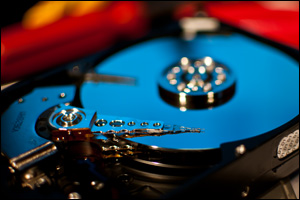 Question from Darla: I have an HP Pavilion laptop with Windows 8.1 on it.
Question from Darla: I have an HP Pavilion laptop with Windows 8.1 on it.
I recently started seeing this message every time I turn it on:
“A hard drive in the system reports that it may fail.”
The thing is the hard drive is working just fine.
Can you tell me what do I need to do to get the computer to stop showing me this message?
Rick’s answer: Darla, most modern hard drives contain firmware that monitors various drive parameters such as overall performance and error rates.
That firmware is called Self-Monitoring Analysis and Reporting Technology System, or SMART for short.
This SMART monitoring routine is commonly referred to as a “SMART Test”, and if an error is displayed we typically say the drive “failed the SMART Test”.
The term “test” is a little misleading because SMART is a monitoring and reporting system, not an actual testing routine.
Be that as it may, the result is the same regardless of what you wish to call it.
The alarming message you’re receiving indicates that your computer’s hard drive is indeed going to fail even though it appears to be working as it should at the moment.
And truth be told, that error message is actually a very good thing.
Back before hard drives were equipped with SMART technology there were few warning signals to alert users to the fact that a hard drive was getting ready to fail.
Some failing drives would emit a whining and/or clunking sound when drive failure was imminent, but many users had no clue what those sounds meant. Therefore they simply kept using the drive until it finally just conked out.
Newer drives that have SMART capability built-in will usually prompt the operating system to display one of several warning messages if it detects that a drive is about to fail.
By design, SMART warnings usually start popping up while the drive is still working. That gives the user an opportunity to back up the data on the failing drive before it stops working altogether.
Which brings us back to your situation…
The only safe way to get that “A hard drive in the system reports that it may fail.” message to go away is to replace the failing drive with a new one.
This is what I recommend that you do (and I mean ASAP!):
1 – Get yourself an external USB hard drive and follow the steps in this post to create a System Image Backup of the failing drive.
2 – After you have a System Image Backup on hand, replace your laptop’s failing hard drive with a new hard drive (or even better, replace it with a super-fast SSD).
3 – Restore the backup you made in step 1 onto the new hard drive or SSD by following the steps in this post.
That’s all there is to it. Your laptop should now be working just fine with a brand new (and healthy) hard drive or SSD.
I hope this helps, Darla. Good luck!
Bonus tip: Want to make sure you never miss one of my tips? Click here to join my Rick’s Tech Tips Facebook Group!
Want to ask Rick a tech question? Click here and send it in!
If you found this post useful, would you mind helping me out by sharing it? Just click one of the handy social media sharing buttons below.